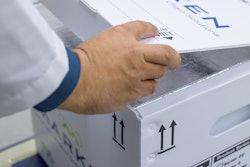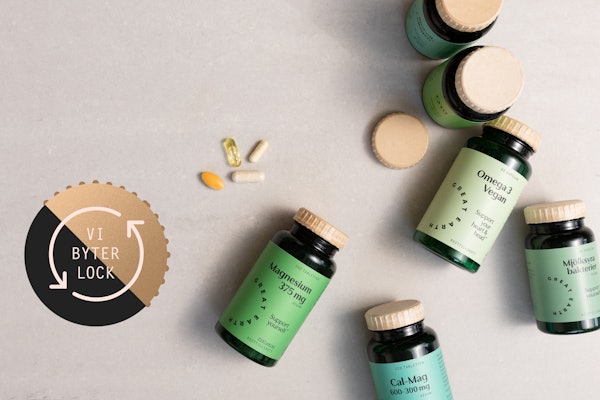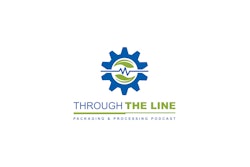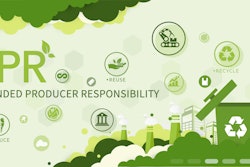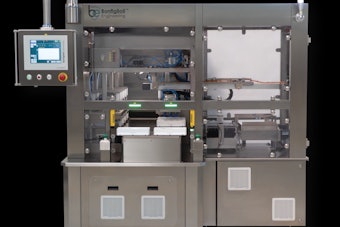In late December 2016, global logistics company UPS announced it completed the acquisition of Marken, a provider of supply chain products to the life sciences industry and clinical trials material storage and distribution.
In this question-and-answer session, Healthcare Packaging discussed the latest trends regarding pharmaceutical and biological clinical trials, as well as related serialization issues (see sidebar) with Dan Bell, Marken’s Vice President of Quality, Compliance and Technical Affairs.
Healthcare Packaging: What are the key differences in packaging/packaging design between commercial and clinical trials packaging for pharmaceuticals and biologics?
Bell: Although thermo-isolating packaging for both commercial and clinical products can usually be interchanged, there are additional considerations that are particular to clinical drugs. First, long-term stability data is not fully known during drug development. This will often result in a more conservative approach when considering packaging for transportation, additional validation times, lower temperatures, higher insulation factors, and active monitoring of environmental factors. Clinical biological samples are likely to be time-and/or-temperature sensitive. As some clinical samples may contain infectious or pathological agents, a special consideration for packaging that meets the requirements of UN classification and Intl. Air Transport Assn.-compliant systems are more likely to be a requirement.
With commercial quantities of product, would distribution go through a more traditional process, and in pallet load quantities?
This is often the case. Quantities of clinical drugs are nearly always transported in smaller quantities than commercial counterparts. This is usually due to availability, production schedules, and patient/subjects spread over a large geographical area for clinical trials. However, greater use of specialist depots for clinical drug distribution, and the advances in late-stage customization often results in clinical drugs transported in bulk/pallet load containers albeit less than commercial quantities. It is not unusual to see multiple active containers transported in a single shipment to a regional depot to support a Phase III clinical trial.
For clinical trials, we’re typically talking about a patient either receiving a package at a physician’s office or medical facility, or via a package sent directly to the patient’s residence, yes?
Correct, however, the last two-to-three years have seen a considerable increase in the number of trials including direct to patient (DTP), or from the patient for bio samples. In fact, most trials now include a provision for DTP even if most subjects still receive their medication at a physician’s office or pharmacy. Therapies targeted to orphan disease, or where patient mobility adds to the challenge of the trial, are good candidates for this type of service. Maintaining temperature control through the last mile to the patient’s home is often critical to ensuring medicine arrives in good condition and is safe to use. A clinical trial involving DTP may also include the need for a nurse to be present to administer the medicine, which in turn requires precise coordination of supply delivery and mobile nursing care.
How is the clinical trials process different from a few years ago—in other words, what are the current and developing trends in this area?
A big push is being made into late-stage customization where unlabeled or “bright stock” clinical drugs are in their dose form but do not have country/trial-specific labeling applied until just before dispensing to the subjects. This allows for country/trial-specific labels/booklets to be added just in time, which in turn allows for smaller batches, less waste and faster turnaround times.
Another new area is the increase in interest for trials involving cell, gene and immunotherapy. This promising new area of medicine is particularly challenging from a packaging and logistical perspective. Patient materials (tumors, biopsies, apheresis, etc.) must often be transported within 24 hours, require temperature control and are likely to be either irreplaceable (in the case of autologous studies), or very difficult to obtain. Final dose form of these therapies are often transported at -180°C in dry vapor shippers, which require special handling, dispensing and transportation/handling. All these factors add another degree of criticality to the clinical supply chain.
How do you define/differentiate distribution, transportation and logistics functions?
Clinical drugs are stored and distributed from specialist depots and that activity is regulated under the requirements of Good Manufacturing Practices (GMP). The transportation portion of the supply chain is regulated by the requirements of Good Distribution Practices (GDP).
Coordinating the shipments from depots and seamlessly transferring from the GMP to a GDP-regulated environment can be challenging. It is essential to build a compliant network and ensure all stakeholders in this process are fully aware of the requirements and associated risks of not performing flawlessly is essential.
Let’s talk about temperature-sensitive products and the challenges they present for logistics operations. How do you define the different temperature ranges and names for them, such as ambient, cold chain, frozen, etc.?
Cold chain is most often used to refer to shipments transported at refrigerated temperatures. As the number of temperature ranges has increased it is more appropriate to refer to a “temperature-controlled supply chain” as opposed to cold chain. From a technical perspective a set point or phase point is more typically quoted. However, the following are the common temperatures, with the most variance in the frozen temps.
- Uncontrolled ambient: no specified range
- Controlled ambient (more correctly called “controlled room temperature”):
- +15°C to +25°C (set point +22°C)
- Also specified at +15°C to +20C for storage occasionally
- Refrigerated: +2°C to +5°C (freeze point of phase material 4°C)
- Frozen: <0°C may be specified as -20°C set/phase/freeze point for -15°C to -10°C
- Deep frozen: -50°C set/phase point typically for -25°C to -40°C; -80°C (using dry ice/carbon dioxide solid)
- Cryogenic frozen: -150°C to -190°C
SIDEBAR:
Examining Serialization and Anti-Counterfeiting Issues
Healthcare Packaging: How is serialization affecting packaging equipment design and features?
Bell: We’re seeing a greater focus on security around seals and tamper-evident closures along with greater use of GPS tracking and geofencing to address DSCSA concerns for drugs in transit. We’re also seeing chain of identity solutions based on integration of GPS, RFID, and Bluetooth technology into packaging and linked to cloud-based tracking software. This becomes especially critical for cell, gene and immunotherapy products that are patient-specific or derived from the patient initially.
What role does Marken play in these areas?
Marken is a supplier of equipment and active/real-time monitoring of shipments in transit, through the use of GPS technology such as Marken’s Sentry device, that was developed for the multi-modal, multi-country, clinical trial materials transportation. Marken is also an active leader in developing teams to quickly recover distressed shipments and takes a collaborative approach with stakeholders across all transportation modes to create robust contingency plans.
Why does barcoding continue to be the preferred method of serializing products, and could RFID or other technologies become more accepted for serialization and aggregation?
RFID may have a part to play in serialization, however the requirement to have specialized equipment installed at all points along the supply chain, up to and including the point of dispensing, will probably make barcoding the preferred solution, especially since this technology is more readily available and readers are easily portable (most smartphones have an app that can scan most barcode types).



